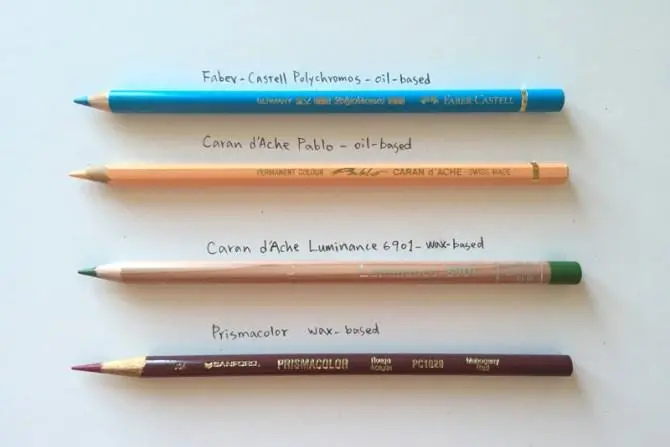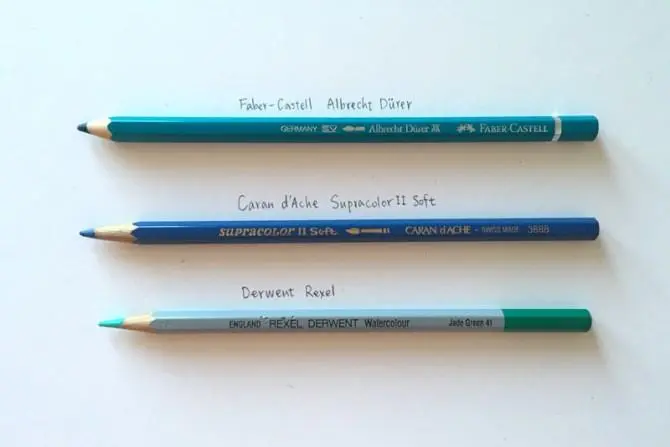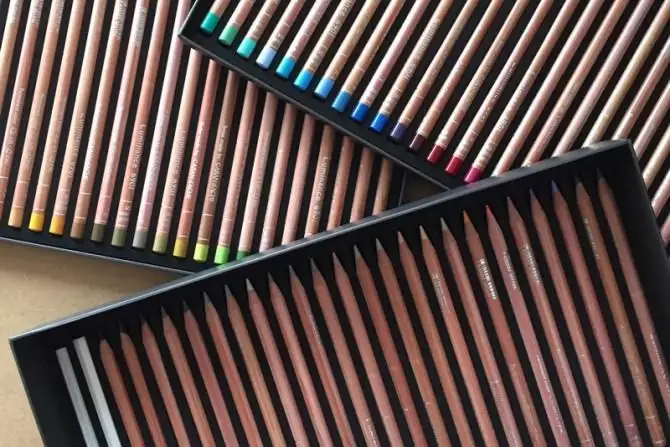Colored pencils occupy a unique niche in the realm of art materials, offering a blend of versatility, precision, and vibrant color that few other mediums can match. This guide is designed to help you navigate the crowded market of colored pencils, understanding the differences between types, and making informed decisions based on your artistic needs.
Investing in High-Quality Colored Pencils
For any serious artist, the quality of their materials significantly impacts the outcome of their work. High-quality colored pencils are characterized by their pigment purity, vibrant colors, and resistance to fading (lightfastness). In contrast, student-grade or children’s colored pencils often have low pigment content and poor lightfastness, leading to dull and faded artwork over time. Thus, investing in artist-grade colored pencils, even in smaller quantities, is advisable for serious endeavors.
If budget constraints are a concern, prioritize purchasing a few high-quality pencils over a large set of lower-grade ones. Many art supply stores sell individual pencils, allowing you to gradually build a collection of essential colors.
Types of Colored Pencils
Colored pencils can be broadly categorized based on the binder used in their cores: wax-based, oil-based, and watercolor pencils. Each type has distinct characteristics and uses.

Wax-Based Colored Pencils
Wax-based colored pencils are widely available and generally more affordable. These pencils have soft cores that provide excellent coverage and a smooth, crayon-like texture. However, they can produce a phenomenon known as wax bloom, where a white film forms on the surface after multiple layers of color are applied. This can be mitigated with a fixative or by avoiding excessive layering. Additionally, wax-based pencils are prone to breakage and can leave small bits of pigment on the paper.
Popular brands:
- Prismacolor (USA)
- Derwent Artists (UK)
- Caran d’Ache Luminance (Switzerland)
Oil-Based Colored Pencils
Oil-based colored pencils feature harder cores than their wax-based counterparts, maintaining a sharp point for detailed work and broad coverage. They offer rich, vibrant colors with a smooth application but do not layer as well as wax-based pencils. Due to their transparency, blending techniques differ slightly. They are more resistant to breakage and smudging, making them suitable for detailed and large-scale work.
Common brands:
- Faber-Castell Polychromos (Germany)
- Caran d’Ache Pablo (Switzerland)
- Lyra Rembrandt Polycolor (Germany)

Watercolor Pencils
Watercolor pencils use a water-soluble binder, allowing them to be used both dry and wet. When water is added, these pencils produce a watercolor-like effect, providing versatility for both fine details and large washes. The colors can differ when wet and dry, requiring practice to master. High-quality watercolor pencils can be used dry with the same creamy texture as oil-based pencils and produce vibrant colors when wetted.
Top brands:
- Faber-Castell Albrecht Dürer (Germany)
- Caran d’Ache Supracolor Soft (Switzerland)
Lightfastness and Permanence
Lightfastness is a critical factor for professional-grade art materials. It measures the resistance of pigments to fading over time when exposed to light. This is especially important for artworks intended for exhibition or sale. Brands like Faber-Castell Polychromos and Caran d’Ache Luminance provide lightfastness ratings on their pencils, with three stars indicating the highest resistance to fading.
Evaluating Color Range
While the ability to mix colors can expand your palette, the variety of available colors in a set is still important. Each brand has unique formulations, so colors with the same name can appear differently. When selecting a brand, consider the practicality and uniqueness of its colors. Some brands offer shades that are indispensable and cannot be easily replicated by others.
Customizing Your Colored Pencil Collection
Artists often have personal color preferences, and not all favorite shades may be available from a single brand. Therefore, buying individual pencils from various brands to create a custom set tailored to your needs is an effective strategy.
Testing and Choosing the Best Pencils
To find the best colored pencils, test them in a well-stocked art supply store. Choose a color, like red, and compare similar shades from different brands. Evaluate factors such as vibrancy, core hardness, smoothness on paper, breakage tendency, blendability, transparency, and coverage. Bringing your preferred drawing paper to test the pencils can provide a more accurate comparison. This method ensures you select pencils that best meet your artistic requirements.
In summary, selecting the right colored pencils involves understanding the differences in types, quality, and lightfastness. Whether you choose wax-based, oil-based, or watercolor pencils, investing in high-quality materials will significantly enhance your artistic experience and the longevity of your artworks.


